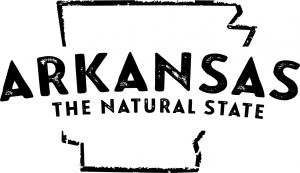
Arkansas Group Travel Planner
 Officially known as The Natural State, we are a natural playground for outdoor activities. If your group is interested in getting active, we have hiking, cycling, fishing, kayaking and golfing. You can also enjoy the scenic beauty of Arkansas at a slower pace by exploring caves, caverns, hot springs, waterfalls and botanical gardens.
Officially known as The Natural State, we are a natural playground for outdoor activities. If your group is interested in getting active, we have hiking, cycling, fishing, kayaking and golfing. You can also enjoy the scenic beauty of Arkansas at a slower pace by exploring caves, caverns, hot springs, waterfalls and botanical gardens.
Natural beauty is the heart of our state, but don’t forget our bustling urban centers. Fort Smith is the real “Wild West,” once the jumping off point for pioneers on their way to open up the unchartered west. Bentonville is an ever-evolving mecca for mountain biking, art and cuisine with diverse museums featuring world-class art, Native American culture and the history of Walmart. You can also visit Eureka Springs for a viewing of the Great Passion Play and Christ of the Ozarks, or Mountain View to learn the culture and crafts of the Ozark Mountains.
Our state capital of Little Rock is home to a presidential library and the headquarters of a world-renowned nonprofit, Heifer International. Tour both of these facilities to learn how we are shaping the world from right here in Arkansas.
In Hot Springs National Park, you can enjoy a soothing soak in thermal water or find out why baseball greats and notorious gangsters alike frequented this historic city. Join us for southern cuisine with a home and garden guru in North Little Rock or a tour of the Daisy Airgun Museum in Rogers … just don’t put your eye out!
We know you will have a great time in The Natural State. Enjoy your visit!
Sincerely,
Jessica Ledbetter
Sales Manager
Arkansas Tourism
Click to Download
Most Recent Feature Articles & Itineraries
- Small Arkansas Museums with Big Stories – These museums feature histories and exhibits that will captivate you
- When Your Arkansas State Park Outing Concludes, Spend the Night in an Enchanting Lodge – Those seeking a fun, and safe, outdoor adventure can visit these marvelous Arkansas state parks
- Arkansas Festivals are Treasures for All – From hot air balloons and chuck wagons to music, motorcycles and food, there is sure to be an Arkansas festival nearby
- Arkansas’s Civil and Human Rights Attractions Celebrate the Power of Courage – Follow the path of some of Arkansas’s most iconic civil rights figures, and view locations important to human rights struggles
Video Showcase
We’ve included some of the best videos from Arkansas Tourism; we hope you enjoy!

